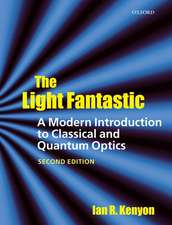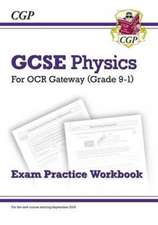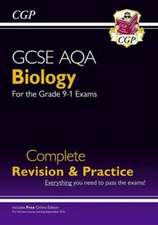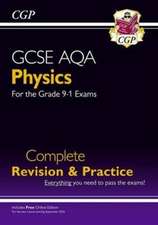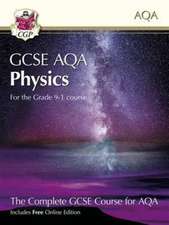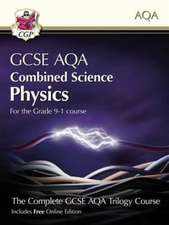Elementary Particle Physics: Student Physics Series
Autor Ian Kenyonen Limba Engleză Paperback – 22 apr 2012
Preț: 384.48 lei
Nou
Puncte Express: 577
Preț estimativ în valută:
73.57€ • 78.67$ • 61.34£
73.57€ • 78.67$ • 61.34£
Carte tipărită la comandă
Livrare economică 18 aprilie-02 mai
Preluare comenzi: 021 569.72.76
Specificații
ISBN-13: 9789401092913
ISBN-10: 9401092915
Pagini: 332
Ilustrații: XII, 312 p.
Dimensiuni: 127 x 203 x 17 mm
Greutate: 0.33 kg
Ediția:Softcover reprint of the original 1st ed. 1987
Editura: SPRINGER NETHERLANDS
Colecția Springer
Seria Student Physics Series
Locul publicării:Dordrecht, Netherlands
ISBN-10: 9401092915
Pagini: 332
Ilustrații: XII, 312 p.
Dimensiuni: 127 x 203 x 17 mm
Greutate: 0.33 kg
Ediția:Softcover reprint of the original 1st ed. 1987
Editura: SPRINGER NETHERLANDS
Colecția Springer
Seria Student Physics Series
Locul publicării:Dordrecht, Netherlands
Public țintă
ResearchCuprins
1 Introduction.- 1.1 Units and notation.- 2 Leptons, quarks and forces.- 2.1 The electron and its neutrino.- 2.2 The heavy leptons.- 2.3 The quark model.- 2.4 Forces.- 3 Experimental techniques.- 3.1 Accelerators and beams.- 3.2 Particle interactions with matter.- 3.3 Bubble chambers.- 3.4 Wire chambers.- 3.5 Scintillation counters.- 3.6 Calorimeters.- 3.7 The UA1 detector.- 3.8 Particle identification.- 3.9 Detectors for neutrino interactions.- 4 QED and the gauge principle.- 4.1 Dirac’s theory of the electron.- 4.2 Feynman diagrams.- 4.3 Electron-positron annihilation.- 4.4 Local gauge invariance.- 5 Symmetries and conservation laws.- 5.1 Quantum requirements.- 5.2 Groups of transformations.- 5.3 Lie groups.- 5.4 Rotation group.- 5.5 Lorentz and Poincaré groups.- 5.6 Internal symmetries.- 5.7 Discrete symmetries.- 5.8 Summary on conservation laws.- 6 Colour and QCD.- 6.1 SU(3) The colour symmetry.- 6.2 The group properties of SU(3).- 6.3 The colour force.- 6.4 Quantum chromodynamics.- 7 The V—A theory of weak interactions.- 7.1 Fermi’s model.- 7.2 The V-A theory.- 7.3 Neutral K-mesons.- 7.4 The Cabibbo hypothesis and its extension.- 8 Electroweak unification.- 8.1 Weak isospin and hypercharge.- 8.2 Electroweak unification based on SU(2)L(?)U(l).- 8.3 The discovery of the weak neutral current.- 8.4 The discovery of the W± and Z0 bosons.- 8.5 Strangeness-changing neutral currents (SCNC).- 8.6 Particle number conservation laws.- 9 Electroweak probes of hadron structure.- 9.1 Deep inelastic electron scattering.- 9.2 Deep inelastic neutrino scattering.- 9.3 The nucleon structure functions.- 9.4 The Drell-Yan process.- 10 Hadronic flavour.- 10.1 Electron-positron annihilation to vector mesons.- 10.2 Flavour symmetries.- 10.3 The determination of meson quantum numbers.- 10.4 The determination of baryon quantum numbers.- 11 Hadron-hadron interactions.- 11.1 Geometric effects.- 11.2 Jet production.- 11.3 Peripheralism and Reggeized exchange.- 12 Ways forward.- 12.1 Grand unification.- 12.2 Supersymmetry.- 12.3 Cosmology.- 12.4 Gravitation.- Appendix A.- Appendix B.- Appendix C.- Appendix D.- Appendix E.- Appendix F.- Appendix G.









